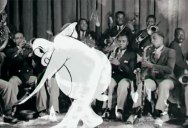Rotoscoping: The Breakthrough That Forever Changed Animation
One breakthrough made animation look natural. And it involved a clown dancing on a roof.
In this episode of Vox Almanac, Phil Edwards explores the beginning of rotoscoping, a technique animators can use to create realistic motion. Invented by Max Fleischer of Fleischer Studios (and echoed and practiced by many others), it involves taking filmed footage and using it as a traceable model for animation. The results are fluid and natural in a way animation had never been before.
As the above video shows, it started with Max’s brother Dave dancing on a roof in a clown costume. Footage of that was then used to model the classic Koko the Clown cartoons, which formed the basis for many Fleischer Studios films. Today, animators still use techniques like rotoscoping to turn real movement into animation.
Check out the original patent here.






